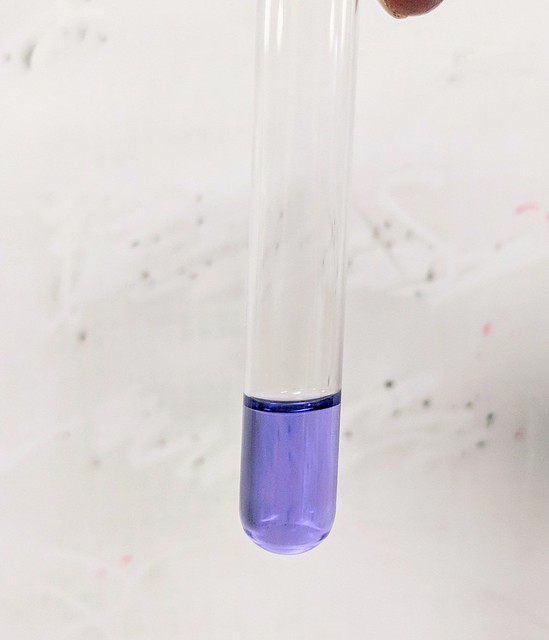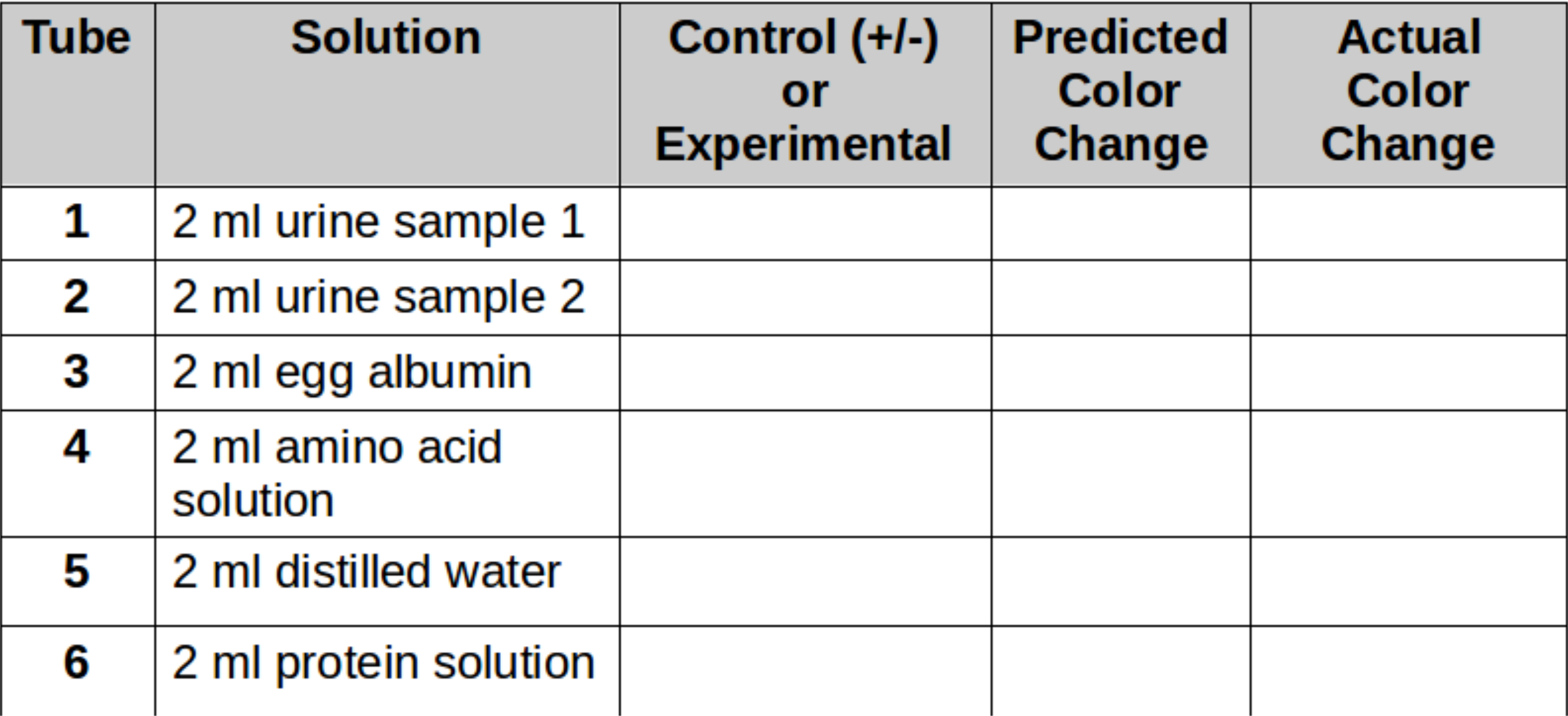Protein Detection Theory
Proteins can be detected through the use of the Biuret test. Specifically, peptide bonds (C-N bonds) in proteins complex with Cu2+ in Biuret reagent and produce a violet color. A Cu2+ must complex with four to six peptide bonds to produce a color; therefore, free amino acids do not positively react. Long polypeptides (proteins) have many peptide bonds and produce a positive reaction to the reagent. Biuret reagent is an alkaline solution of 1% CuSO4, copper sulfate. A violet color is a positive test for the presence of protein, and the intensity of color is proportional to the number of peptide bonds in the solution.


Biuret Test
- Examine the table below. Indicate if the sample is a negative control, positive control or an experimental.
- Predict the color change of the solution.
- Formulate a hypothesis about the components of the experimentals
- Obtain 6 test tubes and number them 1-6.
- Add the materials listed in the table.
- Add 3 drops of Biuret reagent (1.0% CuSO4 with NaOH) to each tube and mix
- Record the color of the tubes’ contents in Table

Conclusions about the Urine Samples
Based on the results of the Benedict’s test and the Biuret test, can we make any conclusions?

